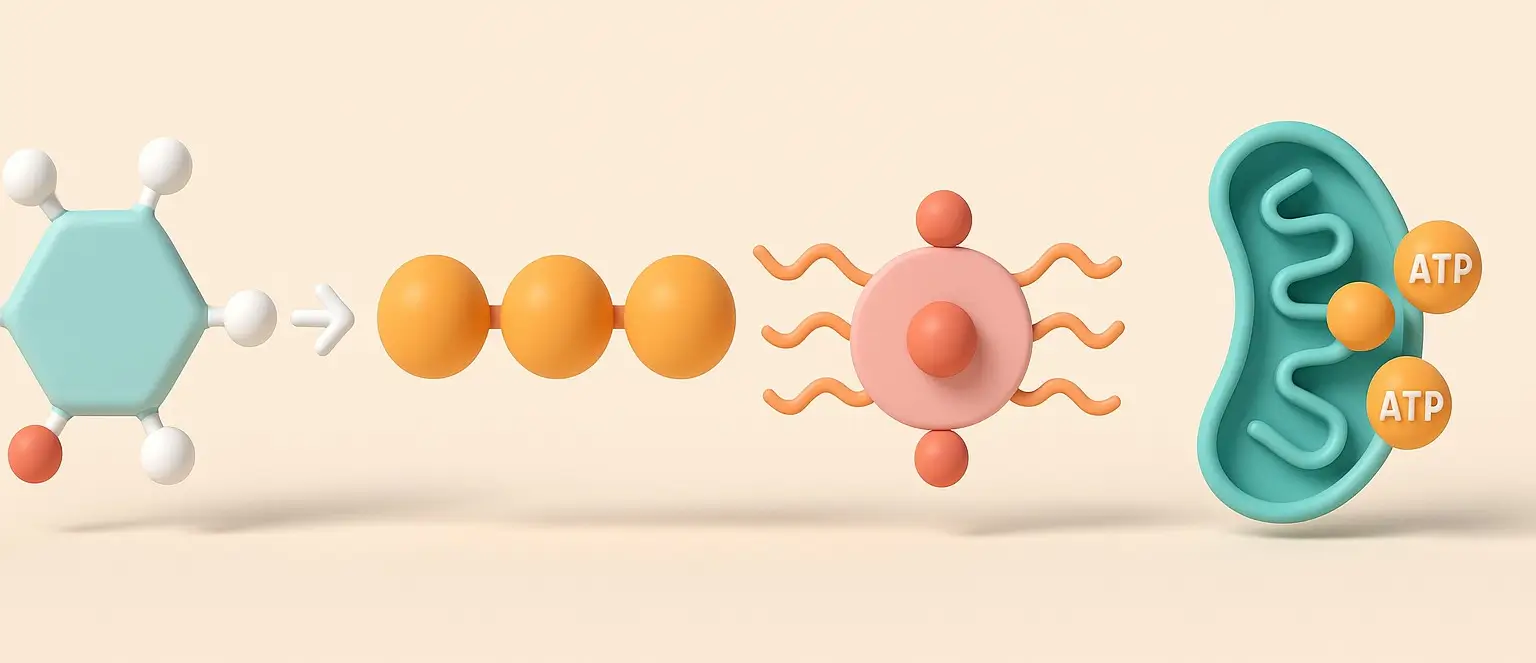- Carbohydrate metabolism involves the synthesis, breakdown, and transformation of carbohydrates, primarily for energy production.
Let’s delve into the key stages of carbohydrate metabolism in a detailed and organized manner:
Glycolysis
- Location: Cytoplasm of the cells
- Process: The conversion of glucose (a six-carbon molecule) into two molecules of pyruvate (three carbons each).
- Energy Yield: 2 ATP (net gain) and 2 NADH per molecule of glucose.
- Key Points: Glycolysis is an anaerobic process (does not require oxygen) and is the initial step in the utilization of glucose, providing substrates for further metabolic pathways.
Pyruvate Decarboxylation
- Location: Mitochondria
- Process: Conversion of pyruvate into acetyl CoA via the pyruvate dehydrogenase complex.
- Outcome: Production of acetyl CoA, which is a critical intermediate that feeds into the citric acid cycle.
- Significance: This step links glycolysis to the citric acid cycle and is crucial for aerobic respiration.
Citric Acid Cycle (Krebs Cycle or TCA Cycle)
- Location: Mitochondrial matrix
- Process: Acetyl CoA enters the cycle, undergoing a series of enzyme-catalyzed reactions that produce NADH, FADH2, and GTP/ATP.
- Energy Yield: Each acetyl CoA molecule results in 3 NADH, 1 FADH2, and 1 GTP (or ATP), contributing to significant ATP production through oxidative phosphorylation.
- Role: Central metabolic pathway that generates high-energy electron carriers for the electron transport chain.
Advertisements
Electron Transport Chain (ETC) and Oxidative Phosphorylation
- Location: Inner mitochondrial membrane
- Process: Utilizes NADH and FADH2 to generate a proton gradient across the membrane, driving the synthesis of ATP through ATP synthase.
- Energy Yield: The majority of ATP in cellular respiration is produced here, with approximately 34 ATP molecules generated per glucose molecule.
- Mechanism: Electrons from NADH and FADH2 pass through a series of complexes, ultimately reducing oxygen to water.
Gluconeogenesis
- Location: Mainly in the liver and to some extent in the kidneys
- Process: Synthesis of glucose from non-carbohydrate sources, such as lactate, glycerol, and amino acids.
- Importance: Essential during fasting or prolonged exercise to maintain blood glucose levels.
Glycogenesis and Glycogenolysis
- Glycogenesis: The synthesis of glycogen from glucose, primarily occurring in the liver and muscle cells for energy storage.
- Glycogenolysis: The breakdown of glycogen back into glucose, providing a rapid source of glucose when needed by the body.
- Regulation: These processes are tightly regulated by hormones (e.g., insulin promotes glycogenesis, while glucagon stimulates glycogenolysis).
Pentose Phosphate Pathway (PPP)
- Location: Cytoplasm
- Process: An alternative glucose metabolic pathway that generates NADPH (for biosynthetic reactions and antioxidant defense) and ribose-5-phosphate (a precursor for nucleotide synthesis).
- Significance: Provides essential components for fatty acid synthesis, nucleotide biosynthesis, and maintenance of reduced glutathione levels.
Regulation and Hormonal Control
- Insulin: Promotes glucose uptake, glycogenesis, and fat synthesis.
- Glucagon: Stimulates glycogenolysis and gluconeogenesis to raise blood glucose levels.
- This streamlined overview captures the essence of carbohydrate metabolism, focusing on energy production and glucose regulation.
Advertisements

